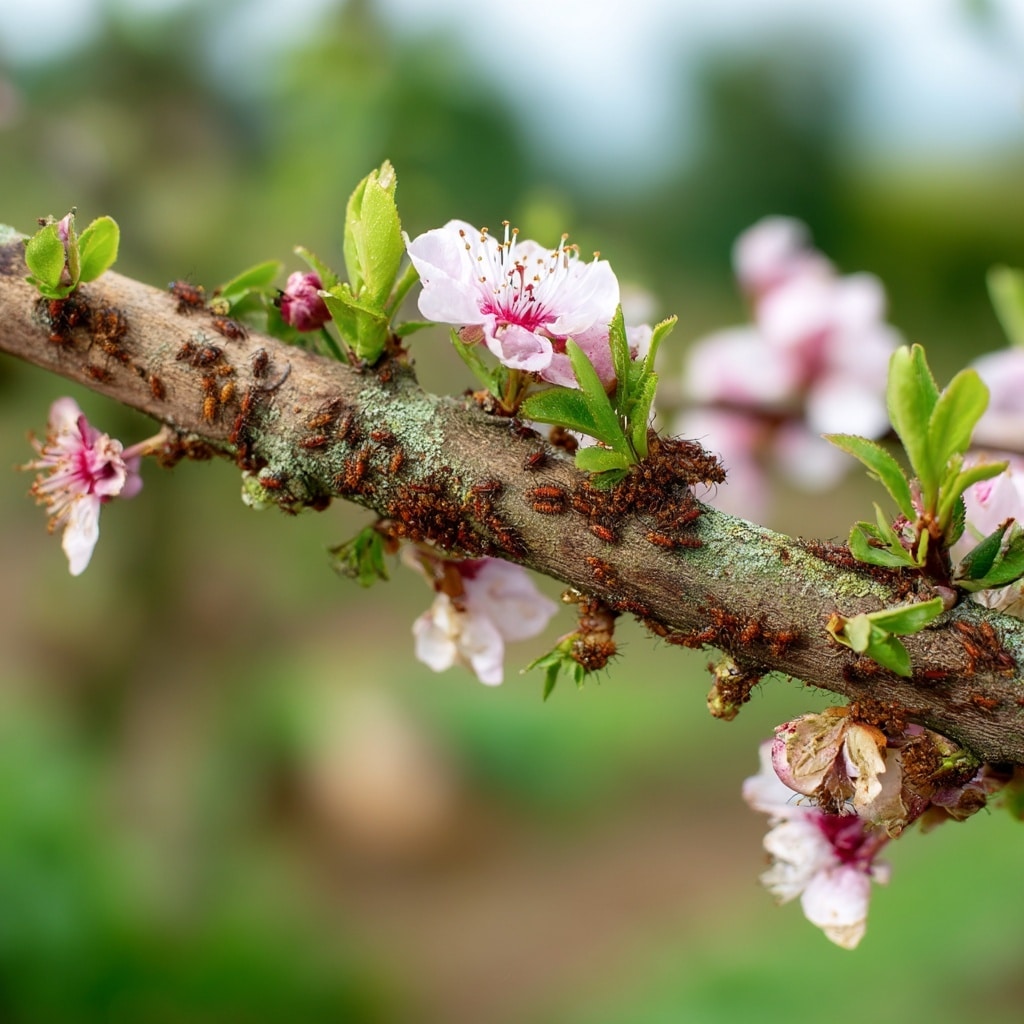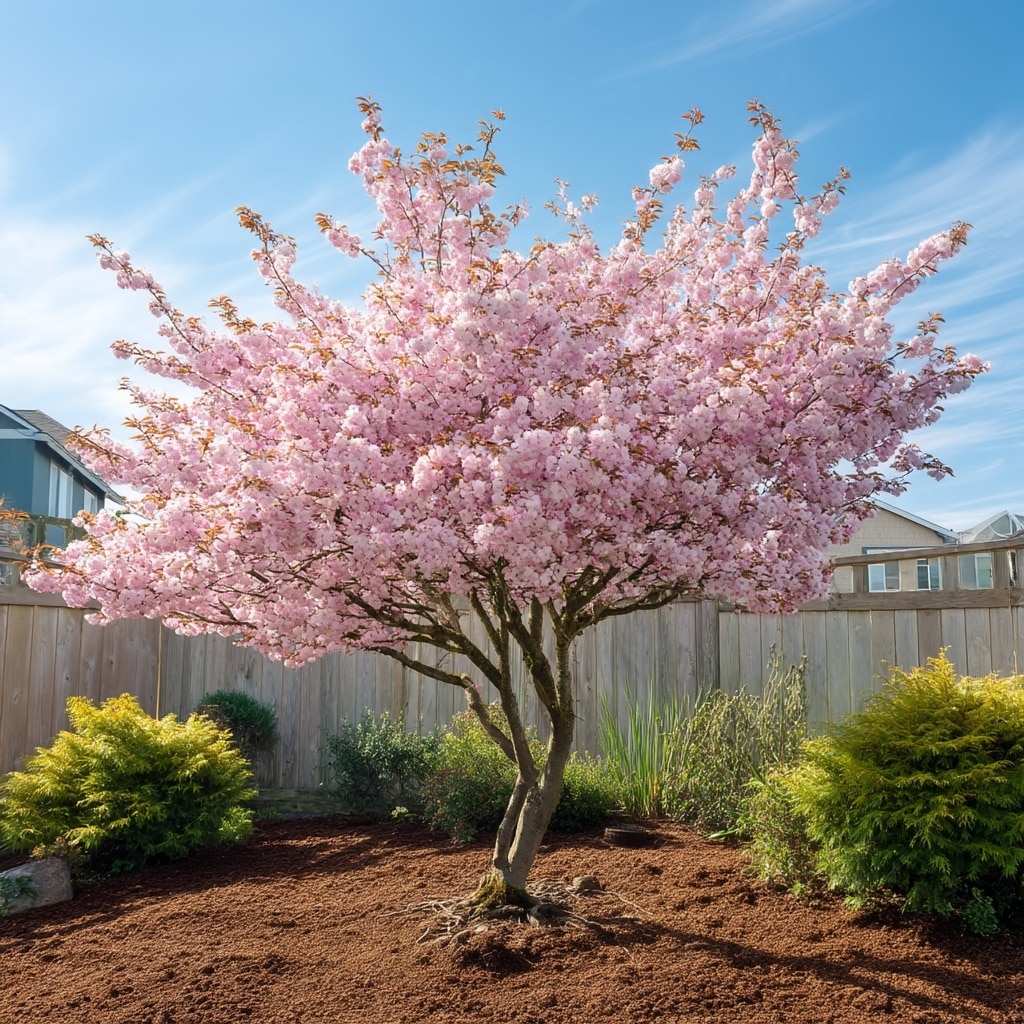The cherry blossom tree is one of nature’s most breathtaking sights. With its delicate blooms ranging from soft pink to pure white, it transforms any garden into a serene, storybook setting each spring. While admired for its beauty, the cherry blossom tree also holds deep cultural significance, especially in Japan, where it symbolizes the fleeting nature of life. Gardeners appreciate its low-maintenance nature, moderate growth, and the fact that it doesn’t bear messy fruit. Whether you’re adding elegance to a yard or honoring seasonal change, the cherry blossom tree is a timeless favorite that brings lasting charm to any outdoor space.
Table of Contents
Quick Growing & Care Tips for the Cherry Blossom Tree
Growing a cherry blossom tree is easier than many gardeners think. These trees are remarkably adaptable and can thrive in a variety of conditions with just a few basic care principles.
🌤 Sunlight
Cherry blossom trees prefer full sun for optimal blooming, but they’re flexible. You can plant them in partial shade or even mostly shady areas and still enjoy a beautiful canopy of flowers. Just remember, the more sun they get, the better the blossoms.
🌱 Soil
These trees grow best in well-drained, moist soil. While they adapt to various types—sandy, loamy, or even light clay—they tend to prefer slightly acidic soil. Avoid soggy ground, as standing water can lead to root issues.
💧 Watering
In their first year, a cherry blossom tree needs moderate watering—about once a week for 30 minutes or until the soil is moist to a depth of 18 inches. After it’s established, watering every 2 to 3 weeks is usually enough. In hot, dry climates, consider adding mulch to conserve moisture and reduce evaporation.
✂️ Pruning
Minimal pruning is needed. Wait until the tree is about five years old before doing any shaping. The best time to prune is during winter dormancy, when the tree isn’t actively growing. Focus on removing dead or diseased branches only.
Best Places to Plant a Cherry Blossom Tree

Choosing the right spot for your cherry blossom tree can make all the difference in its health and bloom quality. Thanks to their adaptability, these trees can grow in a variety of environments, making them suitable for many regions and landscape styles.
🌍 Ideal Climate Zones
In the U.S., cherry blossom trees flourish in USDA Hardiness Zones 5 through 8. These zones cover a wide range of subtropical to temperate climates. From the Mid-Atlantic to parts of the Pacific Northwest, these trees are celebrated with local festivals each spring.
🏡 Landscape Placement
Whether you plant a single tree as a focal point or group several to line a driveway or garden path, cherry blossom trees add instant elegance. They also work beautifully as shade trees, especially when paired with a small bench or seating area beneath their wide canopy.
🌤 Sun Exposure
These trees enjoy full sun but will still bloom in partial or mostly shaded areas. In hot, dry regions, partial shade is preferred to prevent moisture loss and protect the roots.
🌱 Soil Considerations
Cherry blossom trees grow well in sandy, loamy, or even light clay soils, as long as the soil drains well. Avoid planting them in areas prone to flooding or where water tends to collect.
💧 Water Management
If you live in a dry area, place your cherry blossom tree where it can retain moisture more easily. Mulching around the base of the tree helps conserve water and prevent soil from drying out. While these trees are somewhat drought-tolerant once established, prolonged dry periods can affect blooming and overall health.
Growth Rate and Mature Height of the Cherry Blossom Tree

The cherry blossom tree is known not only for its stunning spring blooms but also for its manageable growth and size. It strikes a perfect balance—large enough to be impressive, but not so massive that it overwhelms your yard.
📏 Mature Height
Most cherry blossom trees reach between 40 and 50 feet tall at maturity. Their graceful, rounded canopies make them ideal for creating shade or serving as a centerpiece in your landscape.
🌳 Growth Rate
Expect a moderate growth rate of about 2 to 4 feet per year, depending on local conditions and care. With proper watering, soil, and sunlight, the tree will reward you with consistent yearly growth and increasingly vibrant blooms.
✂️ Natural Shape
One of the best features of a cherry blossom tree is its low-maintenance shape. Even with minimal pruning, it naturally forms a rounded, symmetrical structure. This makes it an excellent choice for homeowners who want a beautiful tree without constant upkeep.
Pests, Diseases, and Maintenance for the Cherry Blossom Tree

While the cherry blossom tree is relatively hardy and low-maintenance, like any tree, it can encounter a few pests and diseases. The key to preventing serious issues is proactive care and early detection.
🐛 Common Pests
Black cherry aphids are one of the more frequent nuisances. These tiny insects feed on leaves and twigs, often causing leaf curling and leaving behind a sticky residue. This residue can lead to sooty mold, a black fungus that discolors the leaves.
If you notice curled or shiny leaves, you can apply a mild insecticidal soap or neem oil to control the problem. For large infestations, commercial insecticides may be necessary.
🍄 Fungal Issues
Two fungal diseases to watch for include:
- Black Knot Fungus: This disease appears as dark, swollen lumps on branches. It spreads quickly and can damage the entire tree if untreated. Prune and dispose of affected limbs immediately.
- Silver Leaf Fungus: Causes a silvery sheen on leaves and branch die-back. Like Black Knot, affected areas should be pruned as soon as symptoms appear.
🧰 General Maintenance Tips
- Keep the area around your tree clear of fallen leaves and debris to discourage fungal growth.
- Ensure proper air circulation by spacing trees adequately.
- Always use sterile tools when pruning to prevent disease spread.
- Maintain a regular watering schedule and mulch to support a strong, resilient root system.
When kept healthy, a cherry blossom tree rarely suffers from long-term issues. A little attention each season goes a long way in ensuring years of vibrant spring color.
Fun Facts and Cultural Notes About the Cherry Blossom Tree

Beyond its visual beauty, the cherry blossom tree carries centuries of cultural meaning and fascinating botanical traits. Here are some lesser-known facts that make this tree even more special.
🌸 The Meaning of “Sakura”
In Japan, the cherry blossom tree is called “Sakura.” It’s deeply symbolic, representing the ephemeral nature of life—a reminder that all things are fleeting and should be cherished. This symbolism is one reason cherry blossom viewing, or hanami, is such a beloved tradition.
🧂 Culinary Uses
Although cherry blossom trees don’t produce edible fruit like traditional cherry trees, their blossoms and leaves are used in cooking. The flowers are often pickled in salt and used in rice dishes, sweets, and teas. The preserved blossoms can be found in traditional Japanese pastries like anpan or wagashi.
⚠️ Are They Toxic?
Cherry blossom leaves contain a natural compound called coumarin, which is safe in small amounts but can be toxic if consumed in excess. For this reason, only the blossoms are typically used in food, and always in moderation.
🍒 No Messy Cherries
Unlike fruit-bearing cherry trees, the cherry blossom tree doesn’t produce large cherries. The tiny fruits that do form are usually eaten by birds, leaving no messy cleanup for gardeners to worry about.
🌐 A Global Icon
From Washington, D.C. to Tokyo, cherry blossom festivals are held around the world each spring. These celebrations bring people together to admire the brief but spectacular blooming season and reflect on nature’s beauty.
Conclusion
The cherry blossom tree is more than just a beautiful addition to your landscape—it’s a living symbol of renewal, beauty, and the rhythm of nature. With minimal care, adaptable growing conditions, and striking seasonal blooms, it’s a perfect choice for gardeners of all experience levels. Whether you’re planting a single tree for its grace or a row for dramatic spring flair, the cherry blossom tree is sure to deliver lasting joy year after year.


